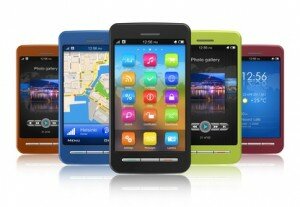 Smartphones by definition must have the ability to make calls and act as a digital assistant. In the early days, both devices were separate and they had to be synchronised to store documents on the phone. At this stage, editing and even viewing could only be performed by using a PDA.
Smartphones by definition must have the ability to make calls and act as a digital assistant. In the early days, both devices were separate and they had to be synchronised to store documents on the phone. At this stage, editing and even viewing could only be performed by using a PDA.
Some companies such as Palm utilised GPRS sleeves to give their PDA range mobile functionality but one of the first true combined models was the Nokia Communicator in around 1996. The IBM Simon dates to 1992 and is generally considered the first smartphone but unfortunately, did not gain widespread popularity. In 1997, Sony coined the term ‘smartphone’ for their GS88 model. In 2001, the Nokia Communicator 9500′s colour screen set it apart from rivals and the race was on for improved models.
Operating Systems
Several operating systems were developed; Symbian from Nokia, Windows CE from Microsoft, PalmOS and several others. Windows CE later became Windows Phone but at the time of writing is still a minor player. In 2007, however, a major player entered the market, the Apple iPhone, based on iOS soon became the most popular of the smartphones available. A year later, HTC became the first manufacturer to build Android-based smartphones and as time went on Android and iOS became the most dominant operating systems in the market. It should also be noted that Blackberry has maintained a loyal commercial user base throughout these years.
Applications
Applications for the iPhone and for Android-based phones now number in the thousands and cater for every conceivable situation, whether it is simple entertainment or commercial applications. GPS applications are sure to increase once battery technology improves. Unfortunately, GPS use drains the battery very quickly, which is not surprising given the technology requirements involved.
Today’s smartphones are essentially mini-computers and perform most of the tasks normally associated with a laptop or desktop computer. Screen sizes have increased so e-books, movies etc. can all be displayed effectively on your screen. Additional accessories for smartphones include printers, projectors, keyboards and many more. With technology improving in leaps and bounds, it will not be too long before smartphones are a complete laptop replacement solution.
Picture: Scanrail – Fotolia
